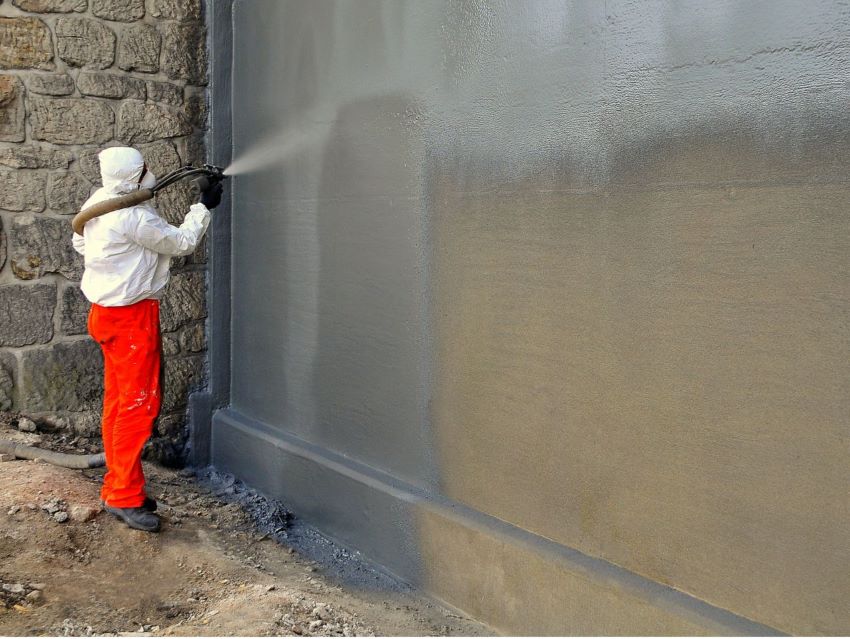Fluid Applied air and vapor barrier
A “fluid applied” material is simply a coating that is designed to be either roll, trowel, or spray applied to a wall sheathing. These materials are often supplied in various grades which are designed for either coating sheathing, sealing seams, flashing penetrations and window openings. Fluid applied air and vapor barriers are used in all types of wall construction including over gypsum and cement-based sheathings, OSB, plywood, CMU, and prepared concrete.
Most fluid applied barriers consist of:
- Joint and fastener treatment products that include options for treating sheathing joints, rough openings, inside and outside corners, and small cracks.
- Fabrics, meshes and tapes used in conjunction with the joint and fastener treatment products to reinforce the treated areas.
- A coating that is spray, roller, or trowel applied over the entire substrate.
When properly installed the barriers:
- Effectively block air leakage, reducing energy cost and increasing occupant comfort.
- Reduce condensation through the walls.
- Provide a seamless moisture barrier with no tears, holes, or lap joints.
- Protect the sheathing and rough openings from weather damage during and after construction.
- Will not lose their effectiveness due to long-term weather exposure.
- Will not blow off the wall during wind events.
It provides the owner an effective and economical means of protecting the structure long-term. The use of fluid applied air and vapor barriers are recommended for a number of construction conditions and provide significant performance advantages. While fluid applied barriers offer a number of advantages, it’s important to understand that self-adhering membranes also offer benefits that should also be considered when determining the appropriate barrier for the project.
- Fluid-applied membranes do not require highly skilled labor, so installation is easy and there is minimized risk of errors.
- Water-based membranes have low volatile organic compounds (VOCs) which simplify installation by reducing protection requirements of the installer and the environment.
- Barriers are available as vapor-permeable or vapor-impermeable membranes to accommodate most wall designs.
- Fluid-applied membranes become one with the substrate making them rigid and stable under air and wind pressure loads.
- Doubles as air barrier and sheathing membrane, and protects rough openings while easily being incorporated with flashing.
- Fire-tested by manufacturer, which means it can be used on all construction types.
The downside to this product is:
- Higher costs than ZIP Systems or building wrap (Tyvek).
- Must be applied per manufacturer recommendation or it will not be warranted.
- Longer install time than ZIP Systems or building wrap (Tyvek).
- Often installed by mason or EIFs installers. Sometimes by both with different product manufacturers. This often leads to a grey area in warranty where the 2 different products meet or overlap.
Posted in General

